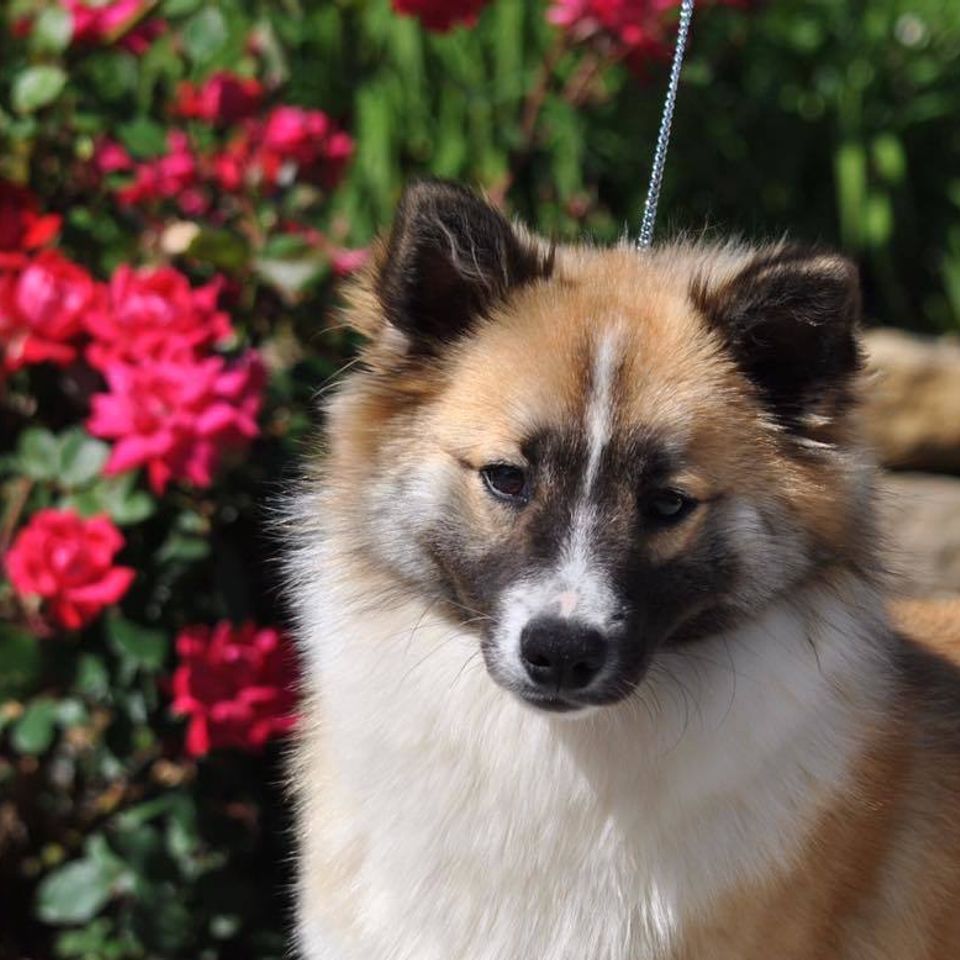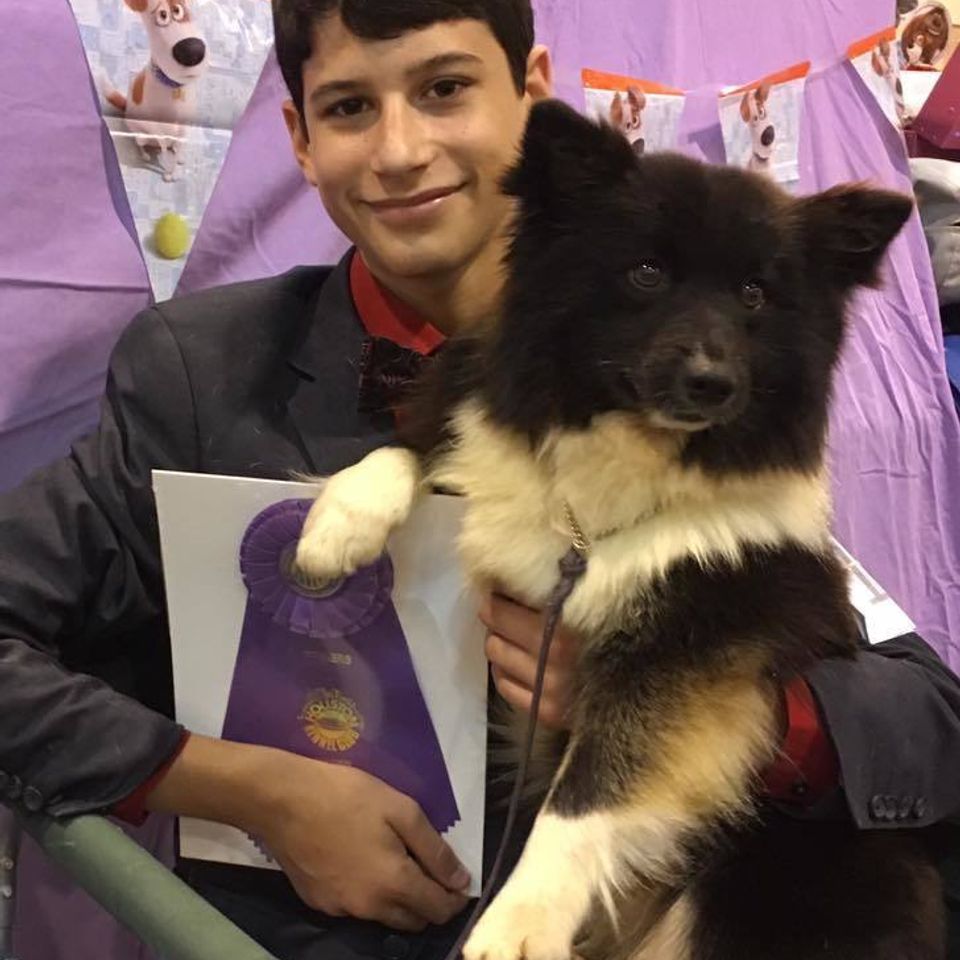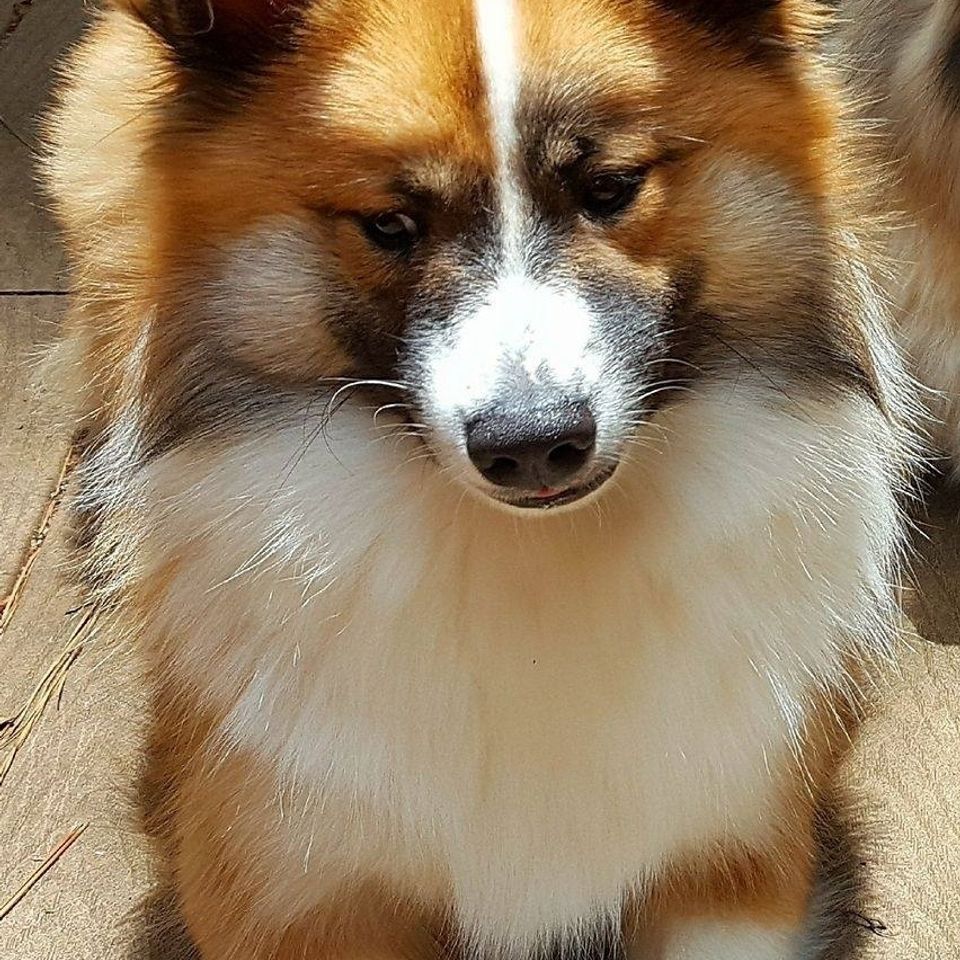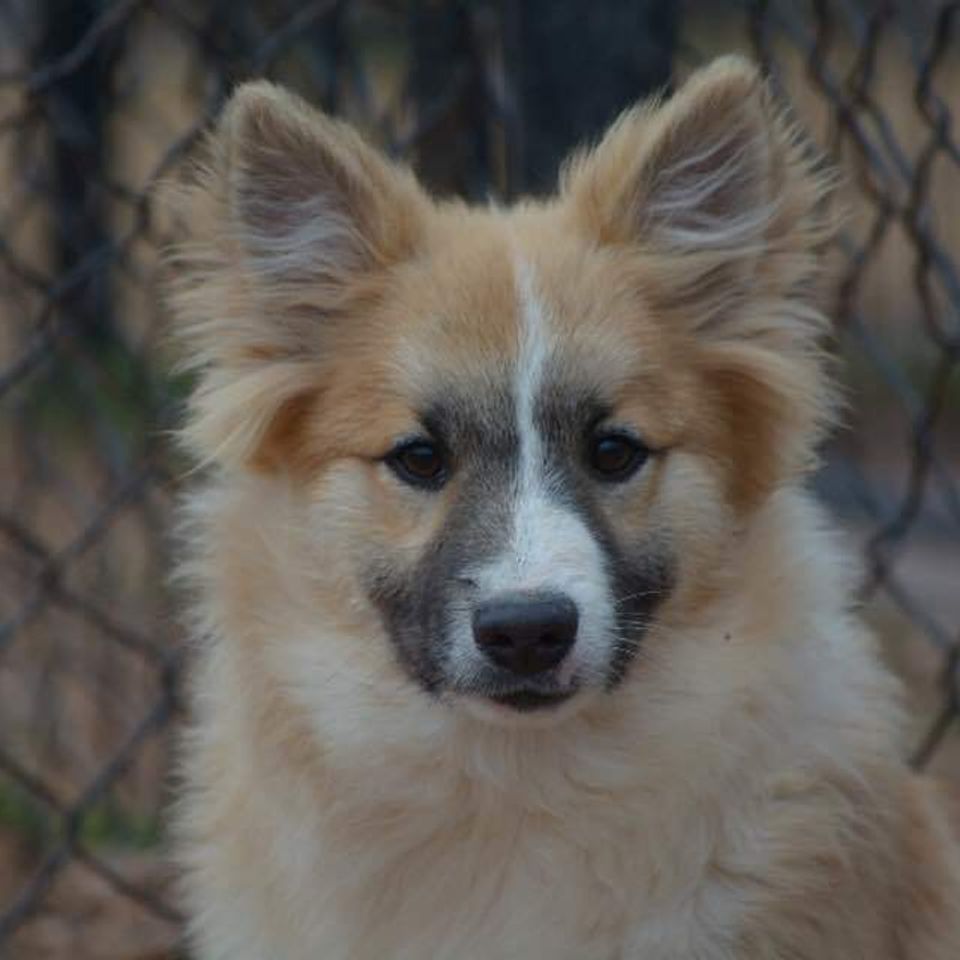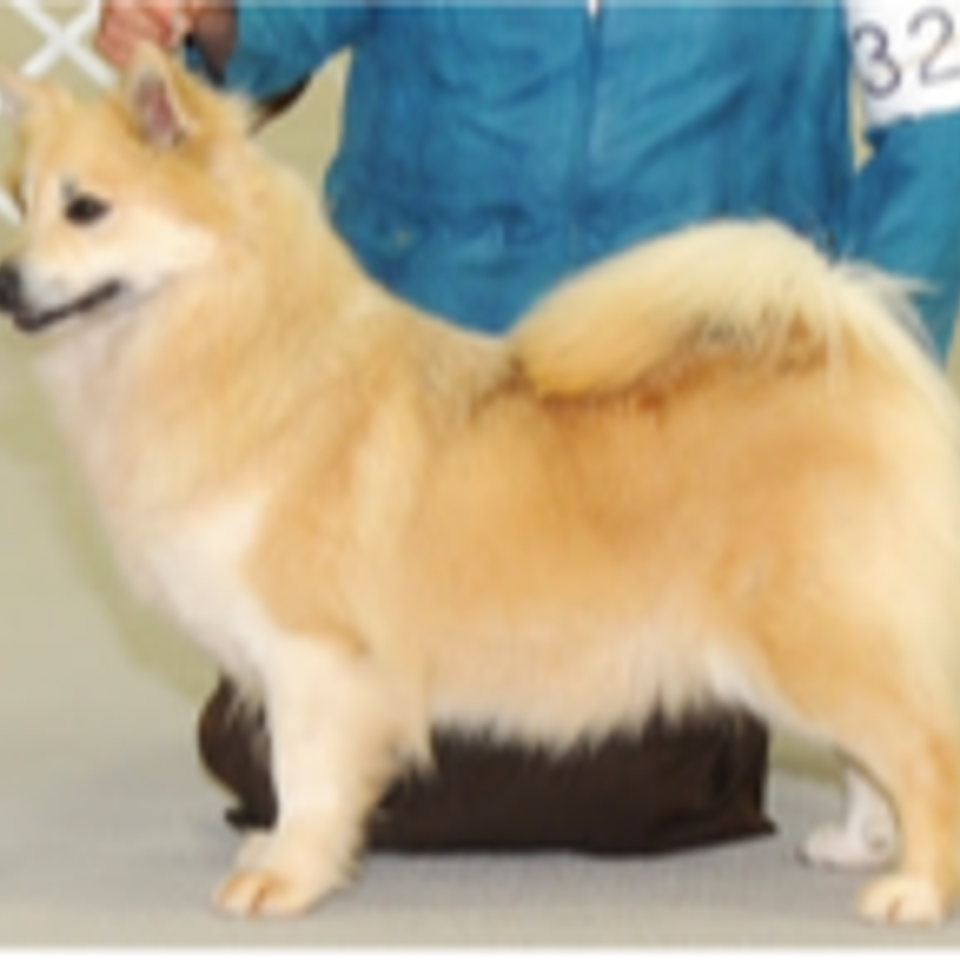Icelandic Sheepdogs
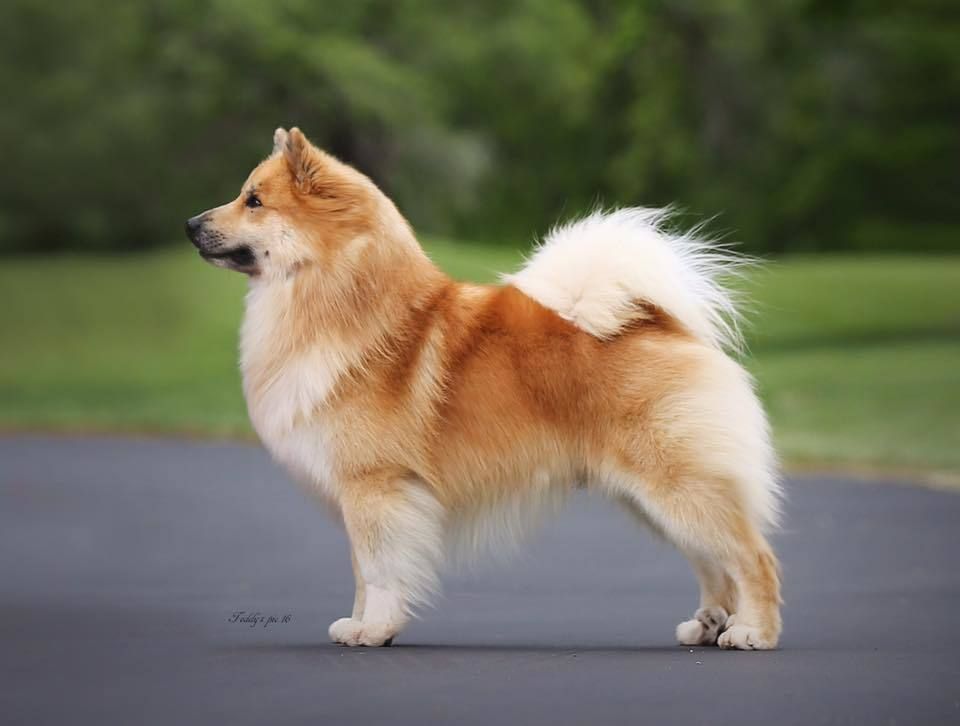
Breed Information
The Icelandic Sheepdog is an ancient Scandanavian breed dating back to the Vikings, and is Iceland’s only native breed. A strong, sturdy dog, good natured dog on the small side of medium sized, a “big dog” in a small body. The Icie is a curious and happy dog, with high self-esteem and determination. They are tough and enduring, agile, very alert, lively, inquisitive, playful, unafraid, non-aggressive, exceptionally friendly and an enthusiastic greeter.
The Icelandic Sheepdog has the classic Nordic type, with prick ears, tail curled over it’s back, slightly longer than tall with good body substance for it’s size. Icelandic Sheepdogs should have double dewclaws in the rear, and are prized when they have double dewclaws in the front as well, classified as “alspora” when they have double dewclaws on all four feet. Unless seriously injured, Icies should always keep their dewclaws, their extra toes provide extra traction. Icies have a thick and weatherproof double coat, and come in two coat lengths, long and short. Ideal size is 18 inches tall for males, 16.5 inches for females, and ranging between 30-38 lbs for males and 25-30 lbs lbs for females.
The original jobs of the Icelandic Sheepdog included herding and protecting livestock, alerting as a watchdog, as well as search and rescue dog. The Icie would maneuver primarily sheep and ponies, seek out livestock lost in snow, protect lambs from birds of prey, watch the children on the farm and participate in other helpful methods for a typical farm dog. Primarily a family pet today, they are capable of competing in multiple dog sports, enthusiastically working with their owner in sports and activities from agility to therapy.
The Icelandic Sheepdog is an ancient Scandanavian breed dating back to the Vikings, and is Iceland’s only native breed. A strong, sturdy dog, good natured dog on the small side of medium sized, a “big dog” in a small body. The Icie is a curious and happy dog, with high self-esteem and determination. They are tough and enduring, agile, very alert, lively, inquisitive, playful, unafraid, non-aggressive, exceptionally friendly and an enthusiastic greeter.
The Icelandic Sheepdog has the classic Nordic type, with prick ears, tail curled over it’s back, slightly longer than tall with good body substance for it’s size. Icelandic Sheepdogs should have double dewclaws in the rear, and are prized when they have double dewclaws in the front as well, classified as “alspora” when they have double dewclaws on all four feet. Unless seriously injured, Icies should always keep their dewclaws, their extra toes provide extra traction. Icies have a thick and weatherproof double coat, and come in two coat lengths, long and short. Ideal size is 18 inches tall for males, 16.5 inches for females, and ranging between 30-38 lbs for males and 25-30 lbs lbs for females.
The original jobs of the Icelandic Sheepdog included herding and protecting livestock, alerting as a watchdog, as well as search and rescue dog. The Icie would maneuver primarily sheep and ponies, seek out livestock lost in snow, protect lambs from birds of prey, watch the children on the farm and participate in other helpful methods for a typical farm dog. Primarily a family pet today, they are capable of competing in multiple dog sports, enthusiastically working with their owner in sports and activities from agility to therapy.

